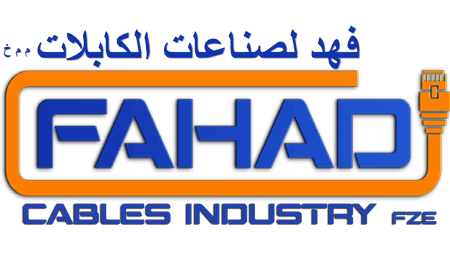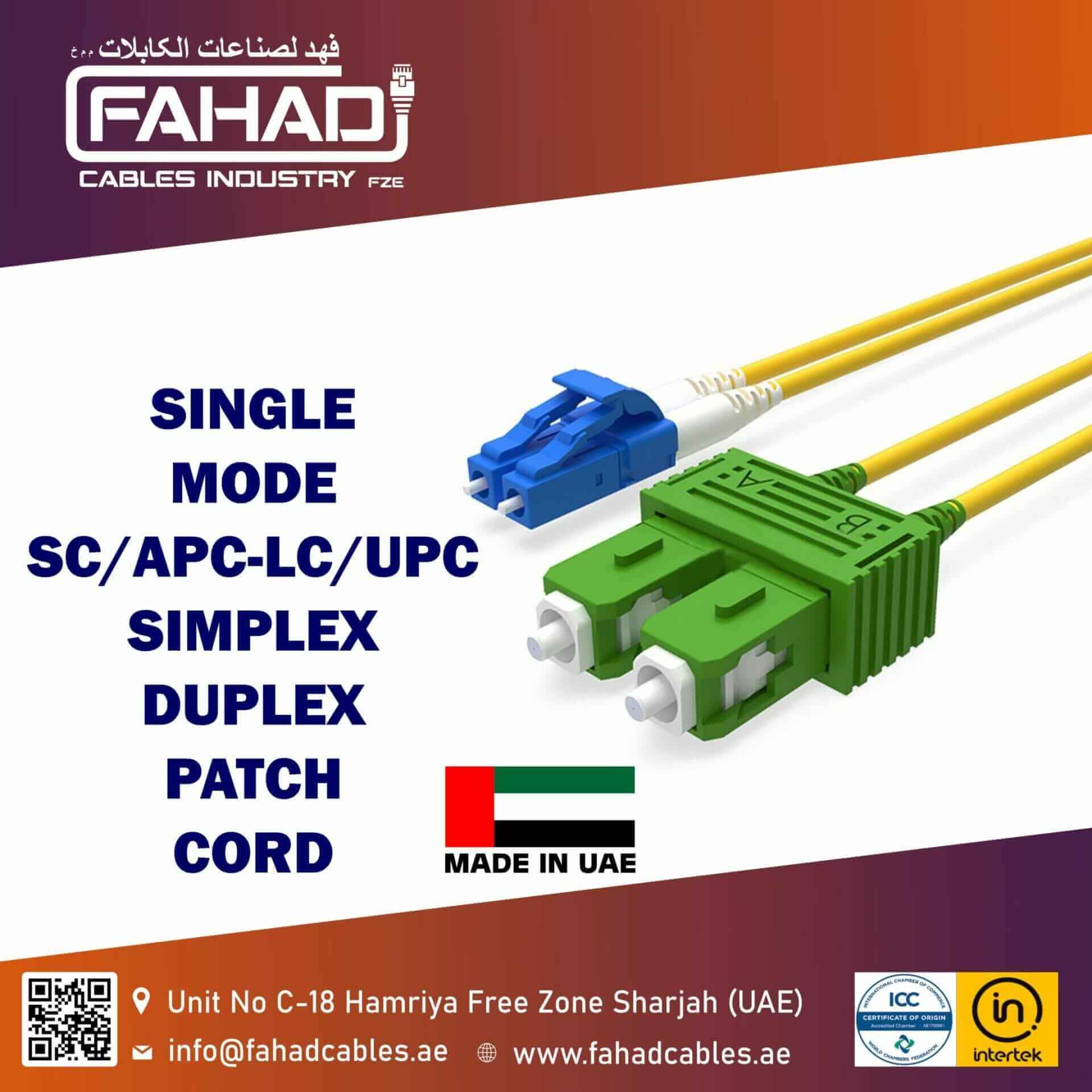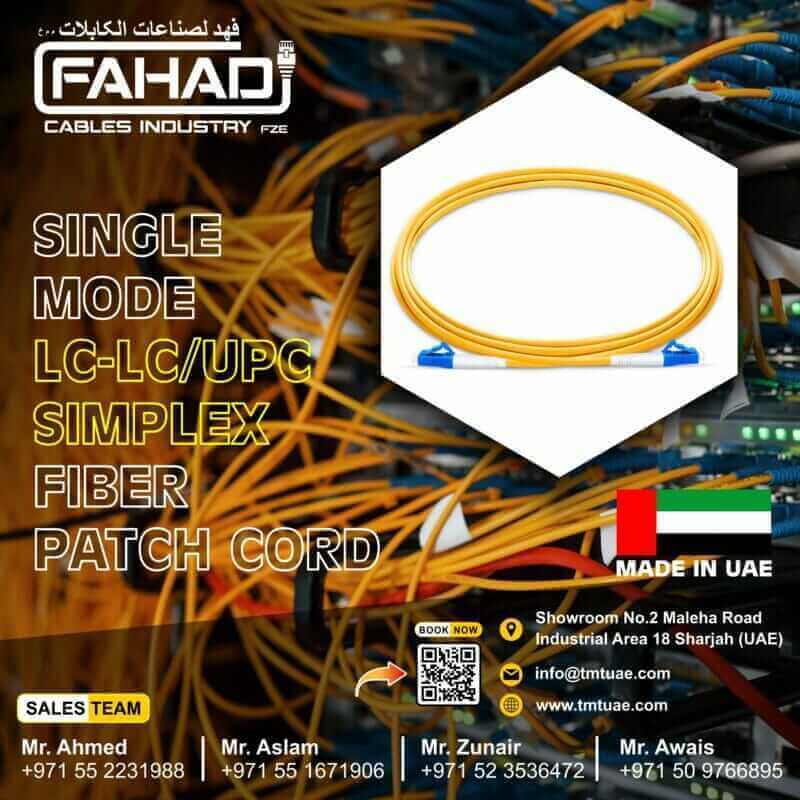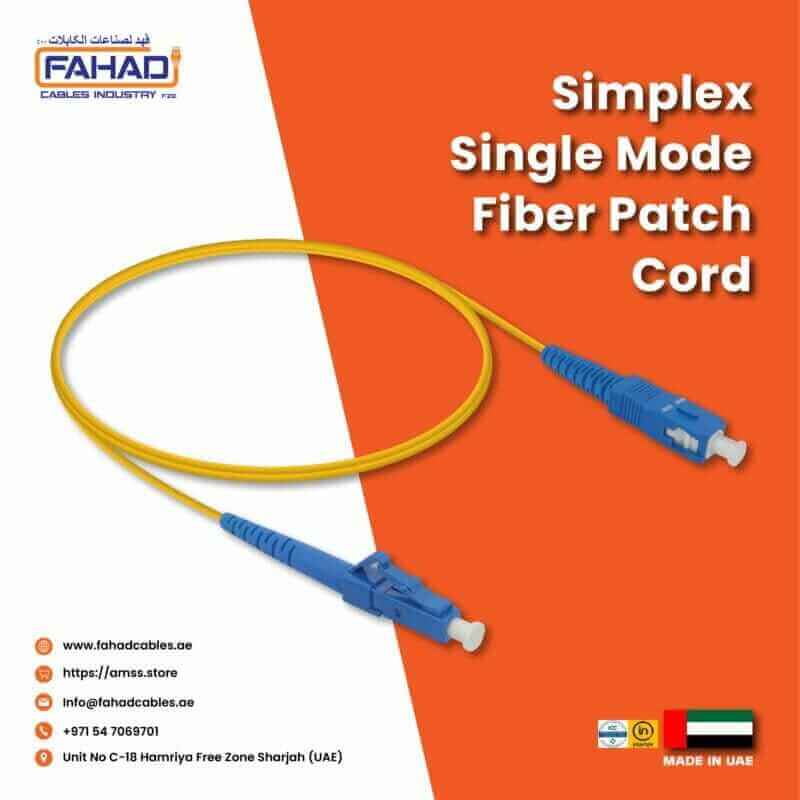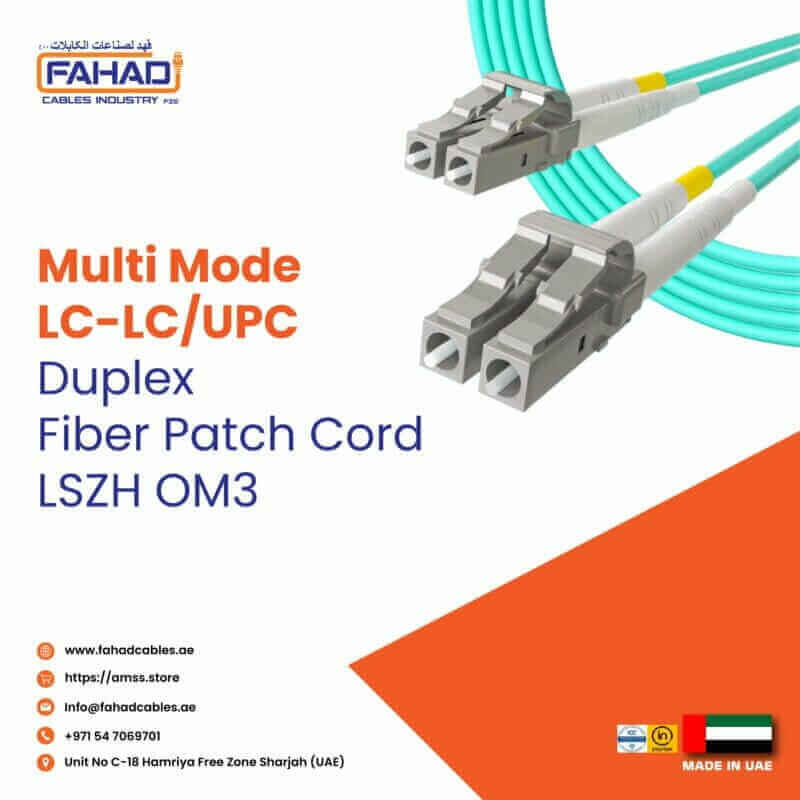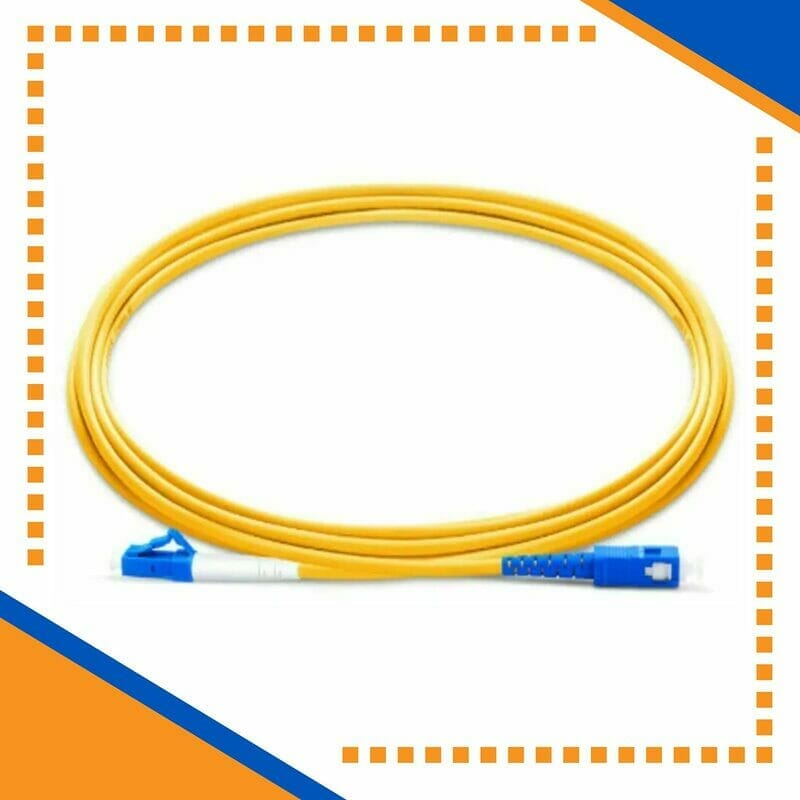Introduction to Fiber Optic Patch Cords
Fiber optic patch cords are essential components in fiber optic networks, serving as critical connections between different networking devices and equipment. These cables are designed to transmit data at high speeds over long distances using light signals, which allows for significantly improved bandwidth and communication capabilities compared to traditional copper cables. With the increasing demand for reliable and fast internet connections, fiber optic patch cords have become indispensable in the telecommunications industry. Single Mode SC/APC and LC/UPC Fiber Optic Patch Cords
At their core, fiber optic patch cords consist of a core made of glass or plastic fibers surrounded by a protective cladding. The core is responsible for carrying the light signals, which travel along the length of the fiber due to the phenomenon of total internal reflection. The efficiency and performance of these cables depend largely on the quality of the materials used and the construction of the connectors. This ensures that the connection point maintains signal integrity, minimizing loss and distortion during data transmission.
In terms of types, fiber optic patch cords can be broadly categorized into single-mode and multi-mode fibers. Single-mode patch cords, such as SC/APC and LC/UPC, are engineered for long-distance communication. They utilize a smaller core size that enables the transmission of a single light mode, resulting in significantly reduced dispersion and improved signal quality over extended distances. On the other hand, multi-mode fibers have larger core diameters and are suited for shorter distances, typically within buildings or campus networks.
Overall, the significance of fiber optic patch cords cannot be overstated. They play a vital role in enhancing data transmission efficiency and reliability in modern communication systems. As we delve deeper, we will explore the specifics of SC/APC and LC/UPC types, shedding light on their individual characteristics, advantages, and applications within the telecommunications landscape.
The Significance of Single Mode Fiber Optics
Single mode fiber optics represent a pivotal advancement in telecommunication technologies, primarily due to their ability to allow light to travel through a single pathway or mode. This design enables a minimal level of dispersion, resulting in improved signal quality and longer transmission distances when compared to multimode fibers. In scenarios demanding high bandwidth and extended reach, single mode fiber optics prove to be preferential, outperforming their multimode counterparts.
The primary advantage of single mode fiber stems from its core’s small diameter, typically around 8 to 10 micrometers. This design minimizes the possibility of modal dispersion, a phenomenon that can lead to signal degradation over longer distances. Consequently, for applications such as long-haul telecommunications and high-speed data networks, single mode fibers are increasingly favored, resulting in enhanced performance at greater distances.
Single mode fiber optics are especially beneficial in urban settings where data needs to be transmitted swiftly across extensive distances. Moreover, many telecommunications networks today emphasize the importance of efficiency and high throughput, which is where single mode fibers excel. Their capability to handle vast amounts of data without compromising quality translates into reduced latency and increased reliability, making them a sought-after solution in many modern installations.
In addition to providing high-quality communication links, these fibers are vital for maintaining signal integrity in densely populated networks, including those in data centers and cloud service providers. The ability of single mode fiber optics to outperform multimode fibers in terms of distance and bandwidth means that businesses and service providers can future-proof their networks, ensuring they are equipped to handle growing data demands.
Ultimately, as technology evolves and the need for faster, more reliable internet connections increases, single mode fiber optics stand out as an essential component in the telecommunications landscape, offering distinct advantages in both performance and flexibility.
Overview of SC/APC and LC/UPC Connector Types
SC/APC (Subscriber Connector/Angled Physical Connector) and LC/UPC (Lucent Connector/Ultra Physical Connector) are two prominent types of fiber optic connectors utilized in telecommunication and data transmission applications. These connectors play a crucial role in establishing reliable connections within fiber optic networks, ensuring efficient transmission of data over distances.
The SC/APC connector is characterized by its angular design, which reduces back reflection and offers improved performance for high-speed data applications. This feature makes SC/APC connectors particularly useful in scenarios where minimal signal loss and high-quality transmission are essential, such as in telecommunication infrastructure and high-capacity server environments. They typically come with a green housing, denoting their APC capability. This angle aids in minimizing light loss through surface reflection, making them a prevalent choice for applications requiring high precision in signal transmission.
On the other hand, LC/UPC connectors are designed with a compact size and a push-pull mechanism, allowing for easier installation and reduced space consumption in patch panels and equipment. The UPC designation signifies that these connectors feature a flat polished end face, which aids in achieving a low return loss. LC/UPC connectors are commonly found in data centers and local area networks (LANs), where space is a premium and high-density cabling solutions are necessary. Their blue housing is an immediate identification mark for UPC applications.
In comparing SC/APC and LC/UPC, it is important to note the primary differences in design and application. While SC/APC connectors excel in high-performance environments due to their angled polish, LC/UPC connectors provide versatility and efficiency in densely packed network setups. Understanding these characteristics is essential for selecting the appropriate connector type tailored to specific fiber optic network needs.
Manufacturing Process at Fahad Cables Industry FZE
The manufacturing process of fiber optic patch cords at Fahad Cables Industry FZE is meticulously designed to ensure the highest quality and reliability of SC/APC and LC/UPC cords. This process begins with the careful sourcing of premium materials, which are essential for producing durable and efficient patch cords. The core component of these patch cords is the fiber optic cable itself, which is selected based on stringent performance criteria to meet industry standards.
Once the materials are sourced, the next stage involves cutting and stripping the fiber optic cables with precision. This is critical, as the proper length and the removal of the outer sheath must be performed with utmost care to prevent damage to the delicate optical fibers. Advanced machinery is employed in this stage, utilizing cutting-edge technology that guarantees high accuracy and consistency throughout the production process.
The subsequent step in the manufacturing journey is the fusion splicing or the mechanical termination of the fibers, depending on the type of connection required for SC/APC or LC/UPC configurations. Skilled technicians oversee this process to ensure that each connection is reliable, providing minimal loss and optimal performance. The meticulous attention to detail in this phase is a testament to Fahad Cables’ commitment to delivering high-quality fiber optic solutions.
Quality assurance methods are implemented at every stage of the manufacturing process. This includes rigorous testing of each patch cord to assess their performance metrics, such as insertion loss and return loss. The final products go through a comprehensive inspection, ensuring that they meet the necessary specifications before shipment. Through these exacting standards of quality control and innovative manufacturing practices, Fahad Cables Industry FZE sustains its reputation for producing premium SC/APC and LC/UPC fiber optic patch cords, catering to a wide array of client needs and industry applications.
Applications of SC/APC and LC/UPC Fiber Optic Patch Cords
The utilization of SC/APC and LC/UPC fiber optic patch cords has been integral across various industries, primarily due to their ability to facilitate high-speed data transmission. One of the primary areas where these patch cords find application is in telecommunications. In this sector, the need for reliable and efficient communication networks drives the adoption of SC/APC connectors, which feature an angled polish that minimizes reflection and enhances signal quality. This characteristic is particularly beneficial in long-distance communication systems, where maintaining signal integrity is crucial.
Data centers are another critical environment for SC/APC and LC/UPC patch cords. These facilities demand high-density connections to manage expansive networks and ensure efficient data flow. LC/UPC connectors, known for their compact design and exceptional performance, are favored for their ability to offer increased connectivity within limited space. The low loss associated with LC/UPC connectors contributes to faster data transfer rates, which is essential in a data center environment where multiple servers rely on swift communication.
Additionally, you’ll find SC/APC and LC/UPC patch cords prevalent in other sectors such as medical, aerospace, and broadcasting. In the medical field, for instance, high-quality fiber optic connections are necessary for advanced imaging systems and surgical applications where clarity and reliability are non-negotiable. Similarly, in the aerospace industry, these connectors are employed for their high-performance capabilities necessary for in-flight communication systems.
Broadcasting, too, benefits from the versatility of SC/APC and LC/UPC patch cords, often used in live event streaming and television broadcasting, where rapid and extensive data transmission is required. Overall, the adaptability of SC/APC and LC/UPC fiber optic patch cords makes them indispensable tools in a wide array of applications, showcasing their importance in contemporary technological infrastructure.
Benefits of Choosing Fahad Cables’ Fiber Optic Solutions
Fahad Cables Industry FZE has established itself as a prominent player in the fiber optic market, offering solutions that stand out due to their exceptional performance and reliability. One of the main advantages of selecting their fiber optic patch cords, including Single Mode SC/APC and LC/UPC types, is their superior performance. These patch cords are engineered to support high-speed data transmission with minimal signal loss, ensuring that communication channels remain effective even over long distances.
Durability is another compelling reason to choose Fahad Cables’ products. Constructed with high-quality materials, their fiber optic patch cords are designed to withstand challenging environments, mitigating the risks of physical damage. This resilience not only extends the life of the cables but also protects against potential downtimes, making these patch cords an excellent long-term investment for businesses seeking reliability in their communication infrastructure.
Competitive pricing is also a significant factor when it comes to Fahad Cables Industry FZE. They offer a range of fiber optic solutions that combine quality with affordability, ensuring that companies do not have to compromise on performance to stay within budget. This balance is crucial, as businesses today are looking for cost-effective solutions that do not sacrifice the quality of their network systems.
Moreover, Fahad Cables is committed to providing exceptional customer support, assisting clients at each stage of the purchasing process. From product selection advice to post-purchase assistance, their knowledgeable team ensures that customers have a seamless experience. This level of support engenders trust and fosters long-term relationships with clients, making Fahad Cables a preferable choice for fiber optic solutions. Overall, the combination of superior performance, durability, competitive pricing, and outstanding customer support makes Fahad Cables’ fiber optic patch cords a wise selection for both individual users and enterprises alike.
Installation and Maintenance Tips for Fiber Optic Patch Cords
Installing SC/APC and LC/UPC fiber optic patch cords requires careful attention to detail to ensure optimal performance and longevity. First and foremost, handle the patch cords by the connectors rather than the cable itself. This approach prevents stress on the delicate fibers inside the cable, reducing the risk of signal loss. When installing the cords, avoid sharp bends and kinks, as they can lead to attenuation and damage. A gentle, gradual curve is recommended as it maintains the integrity of the fiber.
For optimal performance, it is essential to keep the connector ends clean and free from contaminants. Dust and dirt can significantly degrade signal quality. Use a lint-free cloth and appropriate cleaning solution specifically designed for fiber optics to clean the connectors. Additionally, a fiber optic cleaning kit can be beneficial for this purpose. Always ensure that connectors are capped when not in use to prevent exposure to dust and moisture.
When connecting the patch cords, ensure that the connectors are securely seated in the ports. Loose connections can lead to intermittent signals, which can be disruptive to network performance. If any issues arise, testing equipment should be employed to assess signal integrity. Optical power meters and light sources can verify the quality and strength of the signals, ensuring the system operates within the specified parameters.
Regular maintenance checks should be incorporated into your routine. Inspect the patch cords for any signs of damage, such as frayed cables or cracked connectors. Addressing these issues promptly can prevent larger problems down the line. Documenting inspection and maintenance activities not only keeps a record but also assists in identifying recurring issues. By adhering to these installation and maintenance tips, users will maximize the efficiency and lifespan of SC/APC and LC/UPC fiber optic patch cords.
Challenges in the Fiber Optic Industry
The fiber optic industry is currently facing a multitude of challenges that require urgent attention and strategic adaptation. One of the most pressing issues is the rapid pace of technological advancements. As industries continually evolve, there is a growing demand for higher performance products. Companies are compelled to innovate and develop new technologies, ensuring their offerings in fiber optic patch cords, such as SC/APC and LC/UPC, meet the latest industry standards. This transition to advanced technologies requires significant investment in research and development, challenging even well-established industry players.
Another substantial challenge is the increasing competition landscape. With a surge in new entrants and players in the market, established companies must differentiate themselves through quality, reliability, and customer service. This competition often leads to price wars, which can decrease profit margins and compel companies to find cost-effective methods of production without compromising on quality. Maintaining these standards while navigating competitive pressures presents a significant hurdle for many manufacturers and distributors in the fiber optic sector.
Moreover, as the demand for fiber optic networks grows, so too does the complexity of installation and maintenance. This creates a skills gap, with a shortage of qualified professionals who possess the necessary expertise to install and maintain advanced fiber optic systems. Companies like Fahad Cables Industry FZE are continually working to address these challenges by investing in workforce training and development initiatives. By providing employees with up-to-date knowledge and hands-on experience, firms can enhance their operational efficiencies and product offerings.
Lastly, sustainability has become a critical consideration in the fiber optic industry. As environmental concerns rise, there is pressure on manufacturers to adopt eco-friendly practices in production and disposal processes. Navigating these challenges effectively is vital for companies striving to remain competitive and relevant in the ever-evolving fiber optic market.
Future Trends in Fiber Optic Connectivity
The fiber optic connectivity landscape is evolving rapidly, influenced by a variety of technological advancements and increased demands for faster internet speeds. As the global reliance on digital communication intensifies, the need for robust and high-speed data transmission has become crucial. The emergence of single mode patch cords, particularly SC/APC and LC/UPC variants, is steadily gaining traction due to their ability to support higher bandwidth and longer distances compared to multimode counterparts.
One significant trend shaping the future of fiber optic connectivity is the continued push towards achieving greater internet speeds. With the increasing implementation of technologies like 5G and the expansion of cloud computing, organizations and consumers alike are seeking solutions that can handle larger volumes of data efficiently. Single mode patch cords are particularly well-suited for these applications, thanks to their lower signal attenuation and reduced dispersion, allowing for seamless data flow over extended distances.
In addition to enhancements in speed and performance, the evolving landscape of fiber optics is also characterized by innovations in installation processes and equipment. Advances in fiber optic manufacturing techniques are resulting in more durable and flexible patch cords, enabling easier installation in various environments. These improved designs not only enhance the longevity of the cords but also support more efficient setups and reduce maintenance costs.
Moreover, the integration of artificial intelligence in managing fiber optic networks is anticipated to revolutionize how users monitor and optimize performance. AI algorithms can provide real-time insights, identifying potential issues and enhancing the overall efficiency and reliability of networks. Consequently, the role of single mode fiber optic patch cords will become increasingly pivotal in supporting next-generation networks that demand speed, reliability, and efficiency.
As the fiber optic connectivity sector continues to grow, the importance of high-quality components and effective methodologies will maintain a significant focus, ensuring businesses are well-equipped to address future challenges.
